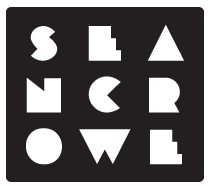(Reposting from Medium)
In November 2011, I attended a User Research Friday event, which introduced an idea that’s stuck with me since; the concept of trust in user research, specifically the need for a user to trust the researcher. It seems like such a basic thing but it has such a large impact. So why is trust so important for the researcher and user relationship, and how can we gain that trust?
Stories are the goal
The objective of user research is to understand how and why a user interacts with other people, completes a specific task, or makes a particular decision. We go about this with targeted questions, and the best answers are delivered as stories.
Stories provide the extra details; the pieces of the puzzle that illuminate a user’s reasoning and their thought process. The problem is most people will only share stories with people they trust. Strangers don’t get stories; they get short responses. There are a few simple actions we can take to help gain the trust of our users. First, we can learn about our user’s common vocabulary. Secondly, we can start the relationship through observation.
Learn Their Lingo
As designers, we have our own language and vocabulary: wireframes, kerning, specs, etc., and we aren’t the only ones. Financial traders, lawyers, doctors, and about every culture or profession have their own vocabulary for peer communication. Before we engage users in a conversation, we should know the basics of their vocabulary and in what context those terms and symbols are used.
Granted, as designers we are not expected to be experts on our users but spending up-front time learning about them helps in a couple ways. First, by knowing their language we can communicate with them in a more detailed dialogue. Secondly, it conveys that we, as a researcher, want to better understand the meanings and context behind what they have to tell us.
Earlier this year, I participated in usability and user research sessions with physicians and nurse practitioners for an iPad app of an existing electronic medical records system to be used during patient visits. We spent 3 to 4 hours simply following them about their daily routine, and also engaged them in a usability test with a prototype of the app.
In my research with the physicians and nurse practitioners, I didn’t do my homework and learn their common vocabulary. I didn’t look up what internal medicine was nor the other terms I would hear. Because of this my questions were very basic. I’m certain this affected their perception of me and limited the depth of the answers they gave. If I had been able to speak with the physicians and nurse practitioners at a more comprehensive level, then the greater the likelihood they would have opened up and told more detailed stories. This may have resulted in better insights and understanding of their habits within the few hours I was with them.
The Power of Observation
While listening to Eris Strassi’s talk on researching financial traders, I was reminded of my college anthropology classes, specifically how cultural anthropologists would engage in participant observation by living within a society. This allowed them to watch people’s actions and listen to how they communicated. Through their observation of everyday actions, they could begin to understand reasoning and subconscious actions within the society.
The researchers weren’t interfering with the people’s daily lives, but they weren’t invisible either. The anthropologist’s presence in the society as an engaged and respectful observer changed the relationship dynamic from strangers to mutual acceptance or even friends. Anthropologist typically spend years observing. Some designers have the luxury of a few months to observe their users, but in most cases even a few hours can be helpful.
During my research with the physicians and nurse practitioners, our protocol order was dependent on the participant’s schedule. Some sessions we engaged in the usability test first and then observed their daily routine and in other session we did the reverse. Reflecting on the research, I noticed that the users were much more forthcoming with their feelings, feedback and stories during the sessions where we observed for a few hours first and then engaged in the usability testing.
By starting our relationship through observation, we began to remove the ‘stranger’ dynamic and show them that we honestly wanted to know more about their work and how we could help them.
As designers and researchers, we have questions about our users actions and intentions, that we want answers to. Our goal is not for short, simple answers but for deep insights into the nuances of their lives and motivations. These kinds of answers are best derived from stories, and user don’t easily share stories with strangers. By observing their actions and learning their vocabulary, we can give our users the comfort and confidence to trust us. The more we learn from these stories, the more valuable services and products we can design.
